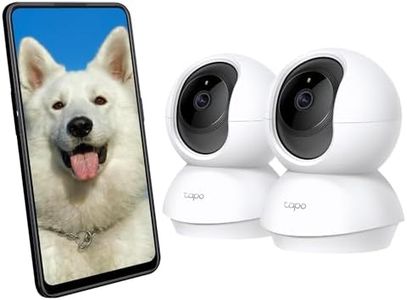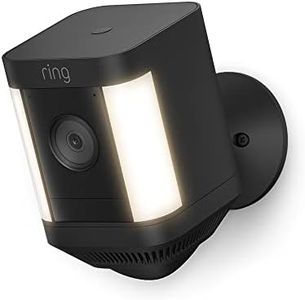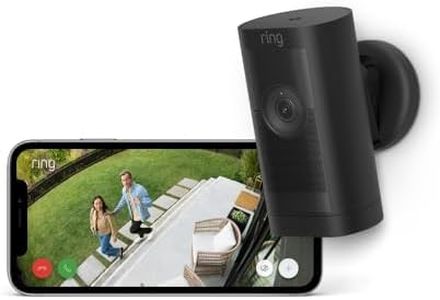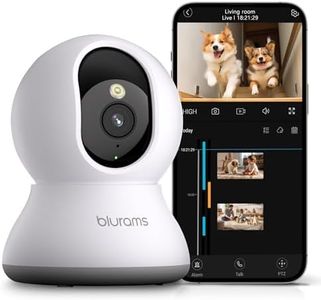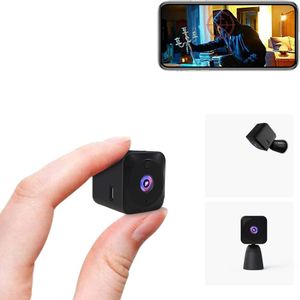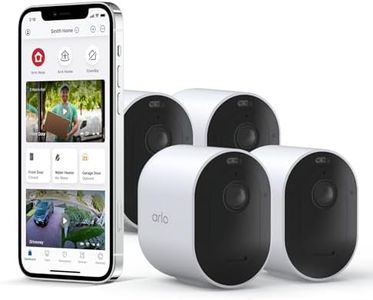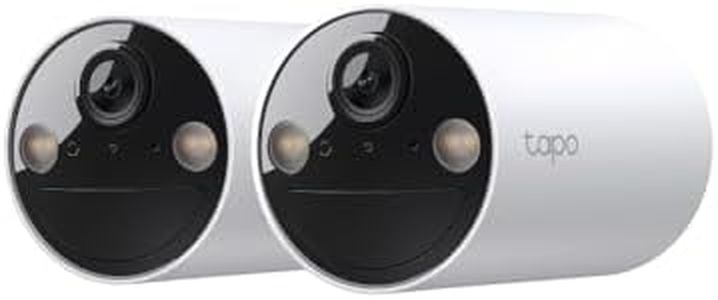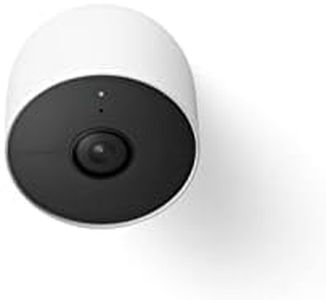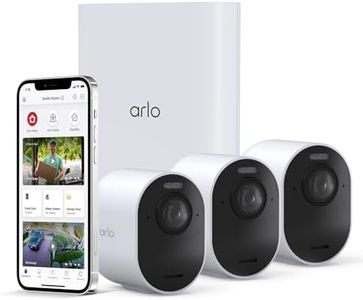We Use CookiesWe use cookies to enhance the security, performance,
functionality and for analytical and promotional activities. By continuing to browse this site you
are agreeing to our privacy policy
10 Best Indoor Wireless Cameras
From leading brands and best sellers available on the web.Buying Guide for the Best Indoor Wireless Cameras
Choosing an indoor wireless camera can feel overwhelming with all the features available today. The best approach is to begin by thinking about what you need the camera for: Do you want to keep an eye on pets while you're away, monitor your front door, or just have added peace of mind at home? Once you know your main purpose, focus on the core specifications that impact how well the camera will work for you. Understanding each spec will help you avoid buying something too complicated or too simple for your needs.ResolutionResolution refers to how clear the video from your camera will look. It’s measured in the number of pixels (like 720p, 1080p, or 4K). Higher resolution means a sharper image and better detail, which is important if you want to easily recognize faces or see small objects. 720p is often enough for basic monitoring in smaller rooms, while 1080p is a sweet spot for most homes, offering clear quality without using too much internet bandwidth. Ultra-high resolutions like 2K or 4K are best if you want to capture fine details or use digital zoom, but they use more storage and internet. Choose a resolution that matches your clarity needs and the viewing distance in the area you want to monitor.
Field of ViewField of view tells you how wide an area the camera can see, measured in degrees. A narrower field (under 90 degrees) focuses on a small space, good for hallways or specific spots. Wide angles (over 120 degrees) cover more of the room, which is useful for open spaces or large rooms. If you just want to watch over a sofa or doorway, a small field is fine. For monitoring whole rooms with one camera, go wider so you don’t miss anything happening at the edges.
Night VisionNight vision is the camera's ability to see in the dark. Most indoor cameras use infrared LEDs to show black-and-white images when lights are off. Some cameras offer 'color night vision' if there’s even a little light in the room. If you need to monitor when it’s totally dark—like in bedrooms, basements, or at night—check that the night vision range (how far the camera can see in the dark) fits your space. For rooms with some ambient light, basic night vision will often be enough.
Audio CapabilitiesMany cameras include microphones to record sound, and some add speakers for two-way audio, letting you listen and talk through the camera remotely. If you want to use your camera to communicate, check for two-way audio. For silent areas or where privacy is important, you might prefer a camera with no audio. Think about whether sound is needed for your purpose—like checking if pets are barking or talking to delivery people—or if video is enough.
Motion Detection and AlertsMotion detection means the camera can notice movement and notify you. More advanced cameras let you adjust sensitivity (so pets or curtains don’t trigger alerts) or set zones where motion should be noticed. Some cameras can tell the difference between people, pets, and other objects. Decide how much control you want—basic motion is simple but may give more false alarms, while advanced options are good if you need specific alerts. If staying informed in real time is important to you, look for smarter detection and notification features.
Storage OptionsStorage refers to where video is saved—either in the cloud (online) or on a local memory card. Cloud storage lets you access footage from anywhere but might require a subscription. Local (SD card) storage works even without the internet, but you’ll need to manage the memory. Choose cloud if you want easy access on your phone or computer, or local for privacy and independence from subscriptions. Some cameras offer both, giving more flexibility.
Connectivity and App SupportThis spec looks at how the camera connects to your home network (usually Wi-Fi) and how you control it. Look for cameras that support stable Wi-Fi connections and have good app support, meaning you can check live video, get alerts, and change settings from your phone. Also consider compatibility with smart home devices like Alexa or Google Assistant, especially if you already use those at home. Pick one that matches your devices and is easy to set up and use daily.
